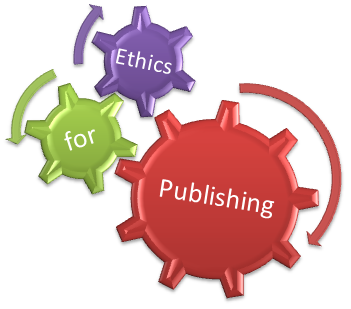Experimental Study on the Effect of Water Injection in an Internal Combustion Engine
(*) Corresponding author
DOI: https://doi.org/10.15866/ireme.v11i6.12852
Abstract
The current scenario of emissions from the combustion of fuels such as petrol and diesel is far too serious to be ignored or put away. The combustion process generates harmful gases such as Nitrogen Oxides (NOx), Carbon Monoxide (CO) and particulate matter (PM) and Sulphur Oxides (SOx), which contributes massively to the air pollution and causes serious risk to the population. A diesel engine is a major source of this pollution, owing to the large number of vehicles it is installed in & also its application in virtually all sectors. Though there are advancements, the data suggests that there is still a huge potential to be unlocked from this approach. The constantly depleting amount of fossil fuels also have encouraged research into alternative forms of transportation, fuel efficiency is currently a major factor for an individual and a car company alike. The entire operation of an engine is related to temperature, specifically, temperature of incoming air charge. If the charge is cooler, the oxygen density available is more which guarantees a more efficient combustion. The aim of this paper is to cool the intake charge temperature in the engine, to improve the power & torque production of the engine, and also improve its fuel consumption by using the technique of water injection. The emissions generated will also be lowered, due to lower combustion and working temperatures and there is no need to stress the engine above its limits. This indirectly leads to lesser consumption of fuel and lower emissions. A National Instruments LabVIEW Data Acquisition System, made available by the MESCOE NI LAB, is used to obtain temperature intake air and the temperature of air after the Water Injection.
Copyright © 2017 Praise Worthy Prize - All rights reserved.
Keywords
References
D. Busuttil, M. Farrugia, “Experimental Investigation on the Effect of Injecting Water to the Air Fuel Mixture in a Spark Injection Engine”, Science Journal, pp 585- 590, 2015.
http://dx.doi.org/10.17973/mmsj.2015_03_201510
S. Patel, G. Rathod, T. Patel, “Water Injection Effects on Performance Characteristics of a CI Engine”, IOSR Journal of Mechanical and Civil Engineering, Vol 11, n. 3, pp 66-70.2014.
http://dx.doi.org/10.9790/1684-11326670
S. Breda, F. Berni, A. Adamo, F. Testa, E. Severi, G. Cantore, “Effects on Knock Intensity and Specific Fuel Consumption of Port Water/Methanol Injection in a Turbocharged GDI Engine: Comparative Analysis.”, Energy Procedia, Vol.82, pp.96-102, 2015.
http://dx.doi.org/10.1016/j.egypro.2015.11.888
X. Ma, F. Zhang, K. Hann, “Effects of Intake Manifold Water Injection on Combustion and Emissions of Diesel Engine” Energy Procedia, vol. 61, pp.777-781, 2014.
http://dx.doi.org/10.1016/j.egypro.2014.11.963
F. Bedford, C. Rutland, “Effects of Direct Water Injection on DI Diesel Engine Combustion”, SAE Journal, October 2000.
http://dx.doi.org/10.4271/2000-01-2938
A. Boretti, “Water Injection in Directly Injected Turbocharged Spark Injection Engines”, Applied Thermal Engineering, vol. 52.pp.62-68, 2013.
http://dx.doi.org/10.1016/j.applthermaleng.2012.11.016
D.L. Daggart, L. Fucke, “Water Injection on Commercial Aircraft to Reduce Airport Nitrogen Oxides”, NASA/TM-2010-213179
http://dx.doi.org/10.2514/6.2004-4198
I. Roumeliotis, K. Mathioudakis, “Evaluation of Water Injection effect on compressor and Engine Performance & Operability”, Applied Energy Journal, Vol.87, n.4, pp.1207-121,2010.
http://dx.doi.org/10.1016/j.apenergy.2009.04.039
R. Cameron, “Effects of On-board HHO and Water Injection in a Diesel Generator”, Univ. of Southern Queensland, October 2012.
http://dx.doi.org/10.21275/v5i5.nov163370
N. B. Totala, Pratyush, A. Hussain, M. Tajkhan, Siddharth, “Performance analysis of 4-stroke single cylinder SI engine and preheating gasoline and Injecting 50% vol/vol water Methanol mixture in carburetor”, Indian Journal of Applied Research, Vol. 3,n.7, pp. 293-296,2013.
http://dx.doi.org/10.15373/2249555x/july2013/92
K. Kannan, M. Udaykumar, “NOx and HC Emissions Control using Water Emulsified Diesel in Single Cylinder Diesel Engine”, APRN Journal of Engineering and Applied Sciences, Vol 4, n.8, pp. 59-62,2009.
http://dx.doi.org/10.21275/v5i4.nov162690
F. Berni, S. Breda, M. Lugli, G. Cantore, “A numerical investigation on the potentials of water injection to increase knock resistance and reduce fuel consumption in highly downsized GDI engines”, Energy Procedia, Vol. 81, pp. 826-835,2015.
http://dx.doi.org/10.1016/j.egypro.2015.12.091
F. Bozza, V.D. Bellis, L. Teodosio, “Potentials of Cooled EGR & Water Injection for Knock Resistance and Fuel Consumption improvements of Gasoline Engines”, Applied Energy, Vol. 169, pp. 112-125,2016.
http://dx.doi.org/10.1016/j.apenergy.2016.01.129
B. Tesfa, R. Mishra, F. Gu, A. Ball, “Water Injection Effects on the Performance and Emission Characteristics of a CI Engine Operating with Biodiesel”, Renewable Energy Journal,Vol.37,n.1,pp.333-334, 2012.
http://dx.doi.org/10.1016/j.renene.2011.06.035
Walke, N., Nandgaonkar, M., Marathe, N., Prediction of Soot and NOx Emissions for Common Rail Diesel Engines Operating Under Transient Conditions, (2014) International Review of Mechanical Engineering (IREME), 8 (5), pp. 884-892.
http://dx.doi.org/10.15866/ireme.v8i5.2898
Ramesh, P., James Gunasekaran, E., Emission Reduction in a GDI Engine with Different Injection Timings – A CFD Investigation, (2014) International Review on Modelling and Simulations (IREMOS), 7 (4), pp. 729-739.
http://dx.doi.org/10.15866/iremos.v7i4.2941
Musthafah, M., Safarudin, H., Bakar, R., Salim, M., Mohd Shafie, A., Feasibility Study for Energy Recovery from Internal Combustion Engine’s Waste Heat, (2014) International Review of Mechanical Engineering (IREME), 8 (1), pp. 223-227.
http://dx.doi.org/10.15866/ireme.v8i1.1263
Refbacks
- There are currently no refbacks.
Please send any question about this web site to info@praiseworthyprize.com
Copyright © 2005-2024 Praise Worthy Prize








